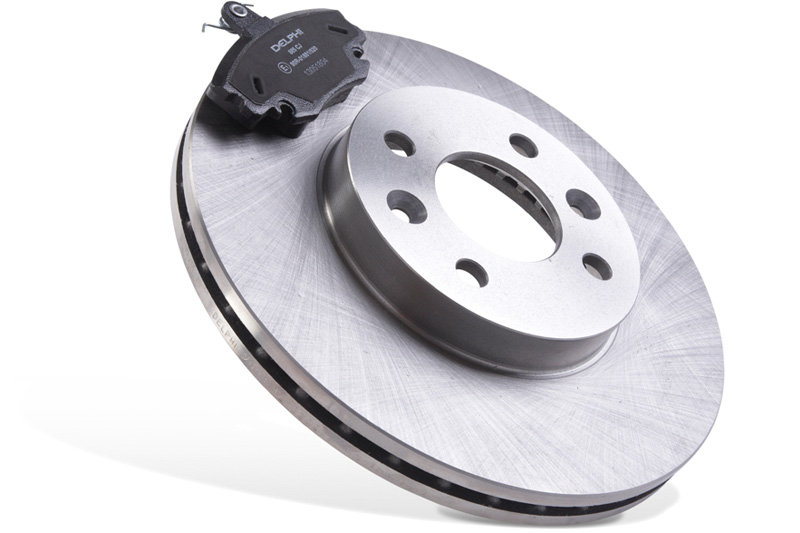
With hybrid and electric vehicles becoming more prominent in workshops, there is a real opportunity for the aftermarket to make significant profit, particularly when it comes to brakes.
By 2025, in the space of just five years, it is estimated that up to 45% of global vehicle production will be electrified. Though some will be entirely electric, the majority of these vehicles will be hybrids, with either a gasoline or diesel engine, as automakers look for the best value solutions to meet increasingly stringent regulatory requirements, whilst adding more on-board power and improved engine performance. With commitments from Volvo, Jaguar Land Rover, Mercedes-Benz and others to electrify their entire vehicle line-up within the next few years, HEVs (hybrid electric vehicles) will soon become a common sight, on the road and in the workshop.
But HEV technology is not just about the future; it’s here now! First-generation cars, such as the Toyota Prius and Nissan Leaf, have been around for many years. Already, the UK HEV parc has topped 750,000, and the number of HEVs on Europe’s road will pass the four million mark this year. For the replacement parts market, this presents new challenges, and importantly, new opportunities.
Apart from the obvious powertrain differences between HEVs and conventional vehicles, other systems, such as the brakes, can be subject to quite different requirements in an electrified vehicle. Most HEVs use regenerative braking; the electric equivalent of ‘engine braking’, only more so. The electric motor normally draws power from the battery to propel the vehicle but, when the brakes are applied, this process reverses. The kinetic energy of the moving vehicle rotates the electric motor, turning it into a generator producing electricity to help recharge the battery and make the vehicle more efficient.
This reduces the workload for the hydraulic braking system. In many cases, the electric motor/generator will provide sufficient braking power to slow the vehicle without using the hydraulics, except when the electric motor cannot provide enough braking torque on its own. For example, on the earlier generation Toyota Prius (2001- 2004), the hydraulic brakes are not used until the vehicle is below seven miles per hour, except for hard stops.
 Because the hydraulic brakes become almost a back-up system, they are used less, and in theory should last longer. However, this is not necessarily good news – with intermittent use, rust and contaminants can build-up, affecting the disc friction surface, the pad mounting and the caliper piston/slider pins. In the case of a caliper carrier, for example, the brake pads may not be free to fully retract from the disc, causing accelerated, uneven wear. Alternatively, depending on where the corrosion lies, the pads may not contact the disc properly. As such, any corrosion on the disc friction face will not get cleaned off completely, resulting in disc pitting.
Because the hydraulic brakes become almost a back-up system, they are used less, and in theory should last longer. However, this is not necessarily good news – with intermittent use, rust and contaminants can build-up, affecting the disc friction surface, the pad mounting and the caliper piston/slider pins. In the case of a caliper carrier, for example, the brake pads may not be free to fully retract from the disc, causing accelerated, uneven wear. Alternatively, depending on where the corrosion lies, the pads may not contact the disc properly. As such, any corrosion on the disc friction face will not get cleaned off completely, resulting in disc pitting.
Without the background noise and vibration of a combustion engine, cabin NVH levels are often lower in an HEV, making the occupants much more aware of any unwanted brake noise. Braking systems are fine-tuned for such applications to take account of this. This means that poorly developed replacement parts can lead to customer dissatisfaction, not only from rapid wear, but also unacceptable noise characteristics.
Labelling itself as a pioneer in propulsion technologies, solutions and services, Delphi Technologies claims to work hand-in-hand with the world’s leading automakers to develop the OE systems on many of today’s latest generation vehicles, and, as a result, to understand the subtle differences between HEV and conventional applications. For factors, this means that new and unfamiliar vehicle applications can be supported with confidence, secure in the knowledge that customer expectations will be fully met.
Delphi Technologies is continually introducing new product lines to support the rapidly growing HEV sector. In the UK, it already supports more than 94% coverage on brake pads for hybrid vehicles, and over 95% on discs for electric vehicles. As HEVs become more popular and the vehicle parc increases, this growing investment ensures that factors can access the associated revenue stream with proven products.

Taking advantage
The company also offers the tools and know-how that aftermarket businesses need to make the most of this fast-growing market. As well as the ability to read fault codes and view live data from the invertor, charger, motor and battery management system, Delphi’s DS diagnostic tool can also, for example, perform a high-voltage battery health check, calibrate the hybrid clutch and reset the brake stroke simulator, making this an increasingly attractive commercial opportunity for factors.
On top of this, factors can also take advantage of the company’s HEV training, helping them to gain expertise and establish a pre-eminent position with independent garages as the preferred resource for HEV braking systems and parts.
The mass migration to electrified powertrains offers business opportunities to those who are best placed to take advantage of them. Delphi believes that it can support ambitious motor factors by using the expertise that it has gained with vehicle manufacturers to benefit its customers in the aftermarket.







